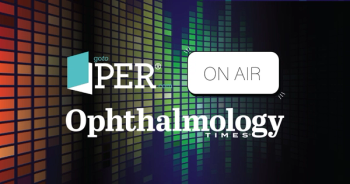
- Ophthalmology Times: May 2021
- Volume 46
- Issue 8
Shedding light on Horner syndrome
Clues to dangerous etiologies include pain and positive imaging findings.
This article was reviewed by Aaron M. Fairbanks, MD
Horner syndrome is characterized by ipsilateral ptosis, miosis, and anhidrosis that result from a lesion affecting the oculosympathetic pathway.
The syndrome can be benign if idiopathic or iatrogenic but can be predictive of a life-threatening event such as demyelinating inflammatory, infectious, vascular, or neoplastic problems.
It is important to promptly and accurately diagnose the cause; ophthalmologists are likely to be on the front lines.
Related:
No definitive information is available about the pathologies associated with Horner syndrome and the incidence rate in US adults is unknown, according to Aaron M. Fairbanks, MD, a senior ophthalmology resident at Mayo Clinic, Rochester, Minnesota.
Because no US population-based studies of the syndrome had been undertaken, Fairbanks and his colleagues set out to determine its population-based incidence in adults, evaluate the underlying causes and disease manifestations, and investigate the value of imaging in patients with a neurologically isolated Horner syndrome.
Retrospective review
The investigators conducted a retrospective chart review of all adults diagnosed with Horner syndrome in Olmsted County, Minnesota, using the Rochester Epidemiology Project database between January 1, 2000, and December 31, 2018.
According to Fairbanks, the team of investigators reviewed the charts for the correct diagnoses and recorded the patient demographic data, presenting signs and symptoms, imaging results, and etiologies and analyzed all of the results.
Related:
Of the 736 patients identified in the review of cases, 78 confirmed cases were included in the study; the rest were excluded because of their nonresident status, disease onset outside the study time frame, or miscoded or incorrect diagnoses.
According to the team of investigators, the causes varied widely from those that were benign including idiopathic and surgical causes, cluster headache, and goiter to the neurologically or systemically dangerous causes that included carotid artery dissection, stroke, neoplastic and traumatic causes, varicella zoster, arteriovenous fistula, and fibromuscular dysplasia.
Findings
The median patient age was 57 years, and all patients were Caucasian. The age- and sex-adjusted incidence of Horner syndrome during the study period was 4.24/100,000/year with no difference in gender or over time.
Related:
“We did find a significant [P < 0.001] difference across age groups, with older patients having a higher incidence of Horner syndrome,” Fairbanks pointed out.
Three-quarters of cases were diagnosed first by neurologists followed by ophthalmologists, with most diagnosed clinically.
“Interestingly,” Fairbanks said, “idiopathic cases were more likely to be confirmed with cocaine or apraclonidine eyedrop testing (P = 0.002), and stroke, surgical, and dangerous causes were more often diagnosed clinically (P = 0.008).
Common etiologies
The most common etiologies were idiopathic (20 patients, 25.6%), followed by internal carotid artery (ICA) dissection (15 patients, 19.2%), stroke (12 patients, 15.4%), surgical (12 patients, 15.4%), and neoplastic (11.5%).
Analysis of the etiologies indicated that about 56% of cases had a dangerous neurologic or systemic origin, according to investigators.
Related:
Compared with other etiologies, the patients with ICA dissections, which were more likely to be diagnosed in younger individuals who were a mean age of 49 years (P = 0.02), were more likely to have pain (P < 0.001), facial paresthesia (P = 0.007), blurred vision (P = 0.04), and photophobia (P < 0.004). Most of the cases with a stroke had a lateral medullary infarction.
Neoplastic causes
Neoplastic causes included 4 pancoast tumors that affected the oculosympathetic pathway at the lung apex. It was noted that the most common neoplasm was lung cancer.
Moreover, the investigators found that neuroimaging results were surprising in that almost 40% of patients with a neurologically isolated Horner syndrome had a positive finding on computed tomography (CT) or magnetic resonance imaging (MRI), Fairbanks explained.
Fairbanks went on to note that in isolated Horner Syndrome cases, pain suggested both a dangerous etiology and a positive imaging result, which was driven primarily by patients found to have an ICA dissection.
Related:
In this first US population-based study of the incidence of Horner syndrome, the primary take-home points are that 56.4% of cases resulted from a dangerous cause; in previous reports the percentages ranged from 8% to 78%.
Another finding useful in diagnosis is that about 40% of patients with an isolated Horner syndrome had positive CT or MRI findings, which is almost double that reported previously.
Conclusion
Finally, investigators noted that pain reported by patients suggested a dangerous etiology and positive imaging, which in this study was most likely secondary to an ICA dissection.
Ophthalmologists should keep in mind that ICA dissections are likely to occur in younger patients, may look like an isolated syndrome or present with neurologic disease and stroke, are painful, and may cause facial paresthesia, blurred vision, or photophobia compared with other causes.
Related:
“We recommend imaging of the oculosympathetic pathway in all cases of Horner syndrome without a clear ethology, even in neurologically isolated cases, particularly when pain is present,” Fairbanks emphasized.
--
Aaron M. Fairbanks, MD
E: [email protected]
This article is adapted from Fairbanks’ presentation at the American Academy of Ophthalmology’s virtual annual meeting. Fairbanks has no financial interest in this subject matter.
Articles in this issue
over 4 years ago
Method of predicting glaucoma conversion proves to be fasterover 4 years ago
Dropless glaucoma treatment an elusive path to ease burdenover 4 years ago
MIGS and cataract surgery option offers positive resultsover 4 years ago
Investigators start pivotal subretinal gene therapy trialover 4 years ago
Examining stability of aspheric IOL in cataract patientsover 4 years ago
The use of MIGS trends and patterns in the USover 4 years ago
Snapshot: Managing endogenous endophthalmitis in patientsover 4 years ago
Retinal nonperfusion, leakage linked with center-involved DMEover 4 years ago
New options are on horizon for presbyopia-correcting dropsNewsletter
Don’t miss out—get Ophthalmology Times updates on the latest clinical advancements and expert interviews, straight to your inbox.












































